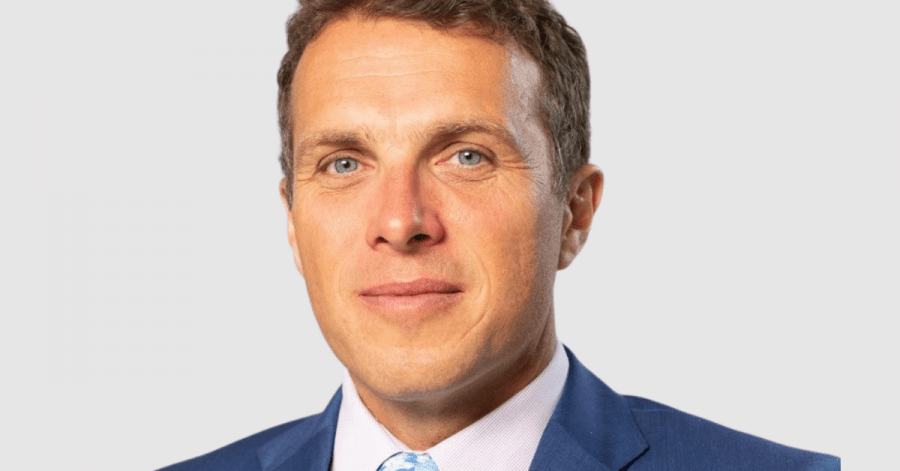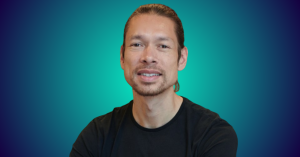How does ESG intersect with growth-stage investing? And, consequently, what notes should entrepreneurs take at this stage when it comes to making a convincing case for investors? Research shows that private equity in particular has started to take ESG seriously, integrating environmental, social, and governance considerations across investment decisions.
ESG is becoming a key component of how investors look at both risk and opportunities around the target. According to PwC’s 2021 Private Equity Investment Survey, which included over 200 firms from 35 countries, 72% always screen target firms for ESG risks and opportunities before investment. Moreover, 65% have a responsible investing or ESG policy and the tools to implement it.
Multiple reasons apply. Private equity funds are responding to new regulations; complying with lender requirements and trying to get better deals; looking for ways to add more value; looking to impress buyers, and acting from a sense of personal awareness and responsibility around issues that affect society at large. And compared to 2019 when risk mitigation was the primary motivator, PEs today are more interested in the premium on value creation attached to ESG, indicating a more proactive approach.
To get a Southeast European PE investor’s perspective on ESG, The Recursive talked to Rossen Ivanov, Managing Partner at BlackPeak Capital, a private equity firm focused on investing growth equity. The following key insights stemmed from the conversation:
- ESG is now part of the company’s due diligence process, with ESG risks becoming as important as financial and legal aspects;
- At an early stage of measuring and evaluating ESG in their pre- and post-investment, the company follows frameworks established by lenders (e.g. EIF) and KPIs developed according to the material requirements of each company;
- In our region, more ESG action is taken as regulation and personal awareness grow, yet there is still a lot to be done;
- The next stage for companies, marketing their position towards ESG is to prove that they are ESG compliant.
The Recursive: What are the three key things that you look for when you’re making an investment decision?
Rossen Ivanov: We prefer export-oriented companies that have built a product or service, which is competitive on a European or global scale based on some unique competitive advantages. If it has a domestic market focus, then it should be one of the top three players in a specific niche of the market. That’s our first criteria.
Second, because we are growth equity investors, we want to see a history of proven historical double-digit growth, so that we know that this company is already on a high growth momentum trajectory.
Last but not least, we want to partner with founders who obviously have the ambition and vision to take the business to the next stage. This means not only expanding to other markets or investing in capacity, for example, but making the whole organization much more corporate in terms of corporate governance, middle management, and processes. We want to help founders “outjump” themselves, as we would like to call it, and scale up much faster than they would do without the help.
There are different ways to incorporate ESG considerations into investment decisions. What is your personal approach to ESG at BlackPeak, as a generalist private equity firm?
We look at ESG at a number of levels. First, we follow the guidelines of our investors like EIF, EBRD, and the IFC, with strict policy on ESG and sectors to be excluded. So, we don’t invest in sectors that can have a specific detrimental impact on society and the environment.
Also, when we do an investment, we now formally undertake ESG due diligence as part of our due diligence process. So, in addition to considering financial, tax, and legal aspects, we hire specialized advisors to look at environmental, social and governance factors. If there are risks or shortcomings related to these aspects, we make a concrete plan for the company to fix them. Also, we have a dedicated ESG officer, Dorian Macovei, our Managing Director for Romania, who ensures full ESG compliance in our investments.
We look at ESG very seriously due to three factors, outside of our formal requirements. First, there’s the feel-good factor and our responsibility towards both society at large and the environment – it is much more satisfying to invest successfully financially, but also know that your investments help the communities in which you invest.. Second, we believe that ESG measures can tangibly increase the value of our investments. And finally, ESG is also part of our risk management framework, helping to minimize the risks in our investments.
The three letters in ESG, the “E”, the “S”, and the “G” are very different and each element of ESG needs to be looked at in separate detail. First, the “G” for good governance is fundamental to success. Good governance provides for better decision-making, risk management, and more successful scaling. Installing good corporate governance has been one of the main factors behind our most successful investments. At the board level, this means representation by the founders, investors, and often independent board directors, who can bring a professional, unbiased view to any situation. With such a structure, we have a broader mix of views on how to proceed, which helps us at every step to make the most educated decision. It also ties in with how you’re getting information from the company, how timely the quality of information is, and how well you can use it.
When it comes to the “S” or the social impact aspect, there’s first the positive feeling in doing things for society. So for example, in a number of our firms, we provided more productive, value-adding jobs for disadvantaged minorities. The second aspect is to ensure that investees comply with legislations and measures regarding labor conditions and rights, for example.
Finally, the “E” or the environment is on everyone’s mind these days. Soon, claims of private equity funds that they are ESG compliant will not matter too much per se – what will matter will be the systems, KPIs, and measurement practices that prove ESG compliance and support for the environment. From an environmental perspective, we have been lucky to invest in a number of firms with direct positive environmental effects. For example, we invested in Resalta, an energy service provider that contributes directly to environmental improvement. Our energy efficiency projects have enabled the savings of more than 60,000 tons of CO2. International Power Supply’s off-grid electricity management system has enabled Saudi Aramco to power some of its gas wells with renewable energy – a first in Saudi Aramco’s history.
In the medium term, it is our desire to see if and how we can reach carbon neutrality as a fund and at the level of our investees. We believe that if they manage to become carbon neutral, which has a certain added cost, it will be value-enhancing, because in 5 to 10 years such companies will command a premium when sold. We’re currently at the point where we are educating ourselves on how we can implement carbon neutrality with our investees. Also, Resalta is developing a service to help companies walk the path to carbon neutrality, which we hope will help us and some of our portfolio companies.
Internally, we add another “E” to ESG for “economic” impact. Our funding from the EIF, which is under the COSME and JEREMIE programs, the EBRD, and the IFC seeks to support SMEs in the region, which are the backbone of the regional economies and of the EU as a whole. We are strongly convinced of the ability of regional SMEs to drive economic growth via innovation, increase of exports, and increase in employment and productivity.
Venture capital funds have the advantage of investing in technology and that’s great in its own right. But normally, their investments are concentrated in the capitals or main cities due to the availability of IT talent. We support companies across sectors, which often provide employment opportunities in manufacturing, for example, in less developed parts of our countries and to disadvantaged workers. The economic and demonstration effect of supporting such SMEs is significant.
How do you measure impact at these different levels?
On all the aspects of (E)ESG, we have a set of KPIs, which we actually measure for each company. These are specific to the industry and the company. We have developed these KPIs ourselves. Some are as simple as the number of jobs that have been created with the support of our investment, but we also look at more granular impact aspects, such as for example, how many people we’ve attracted back from the West in our region.
As a top level statistic, with our first fund, we invested €26 million euros, which attracted almost €100 million additional equity and debt for our investees. Our firms built five factories and created more than 2000 jobs for the period of our investment.
Taking the example of Resalta, what has been your experience as an investor of managing more capital intensive and longer term return investment than usual? And what would it take to repeat a similar investment?
Resalta now is one of the recognized players in the ESCO market in the region. The energy efficiency market overall has been very fragmented in the region and actually in the entire EU due to its capital intensity. The market has also seen both successful and many unsuccessful companies. We chose to invest in Resalta as we very much liked the team and their approach – very professional and technology agnostic. We thought it was a great opportunity to scale the company regionally and create a regional leader in energy efficiency. However, the business model is very capital-intensive, which makes it difficult to scale fast. In fact, through our investment, we felt that the capital-intensive model doesn’t suit us well given our first fund’s limited resources. Therefore, Resalta transitioned to an asset-light model, where we develop the projects and sell them immediately to partners who finance their construction. This has enabled us to develop a much bigger pipeline much faster.
What are the catalysts we need to advance the ESG agenda in the region?
In the first fund, we looked more at the economic aspects, and less at the environmental ones. For the second fund, there were a number of catalysts coming from different sides to spur us to embrace ESG as an integral aspect of our operations.
First, we have benefited from the extensive support and know-how of EIF, EBRD, and IFC on these matters and we have implemented an ESG system that fulfils their requirements.
Another important catalyst was our increased personal awareness of the seriousness of the environmental damage done to our planet. Having read David Attenborough’s “Life on Our Planet” and Bill Gates’ “How to avoid a climate disaster”, the message is very clear – we’re running out of time. We need to do something about it even at a smaller, personal level.
What do you find as the most prominent ESG-related issues in our region?
Again, you have to break them down by element. The environmental part is a long discussion – from how electricity and heating are produced, for instance, in Bulgaria, it’s mainly coal-based, – to having mostly high-emissions, old cars on the streets. We’re constantly being reprimanded by the EU that the level of pollution is higher than acceptable. Pollution is a serious problem which has direct economic and social costs. On the environmental side, certainly we have a lot of work left to do as a region.
When it comes to the social side, growing inequality and other issues are as much of a problem here as they are in the US. Therefore, we need more policies to reduce inequality and provide good employment opportunities for disadvantaged people. And on the governance side, a lot of education needs to be done for local entrepreneurs on how to partner with investors and ensure proper and transparent corporate governance.
How can companies better ensure they comply with ESG issues that are important for their business model and stakeholders, specifically investors?
First, if you work with investors, you need to be very respectful of proper and transparent governance – how you take decisions and how you provide information. When there is bad news, you have to think – are you going to keep quiet about it and are you going to make decisions without your minority investors or will you be fully open and decide jointly on the best possible course of action? Once you have someone’s money in the company, you have a responsibility to them as it is no longer just your company as an entrepreneur even if you are a majority investor. And good corporate governance Inevitably brings value to the company even if it requires additional efforts from all parties.
The other aspect is to think about all stakeholders in the organization. There are no shortcuts to the social conditions in your organization because any shortcuts will inevitably translate into tangible risks and loss of value. And then on the environmental part, it comes from having awareness first. We all need to do our little part to help the environment. And then, if you can do a bit more and be an example all the better, for example becoming carbon neutral, investing some money for sustainability initiatives, that would be better.
Above all, if you embrace ESG, it’s important to believe in it and have the systems and processes to implement it. Because it is easy to embrace ESG as a concept. But the next stage is proving that you are really ESG compliant. Investors are not just going to take your word for it. They’re going to ask “What did you do in this direction? What are your metrics? What’s your annual progress? What were the problems and how did you fix them?”








